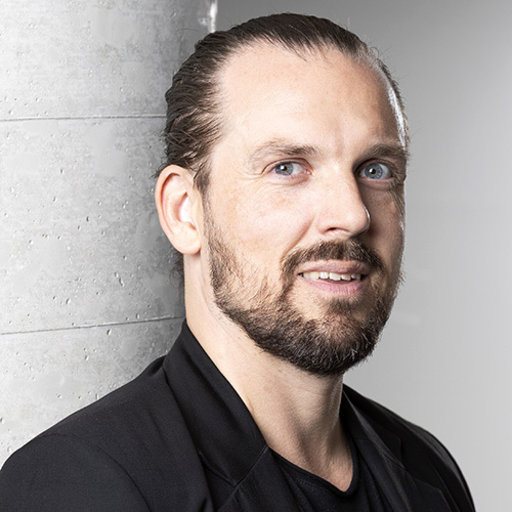Colivers Club Ep 15: Digital Nomadism Expert Insights with Daniel Schlagwein, a Pioneer in the Field
In this episode of Colivers Club we dive into the fascinating world of digital nomadism with Professor Daniel Schlagwein from the University of Sydney.
Daniel, a pioneer in studying the digital nomad lifestyle, shares his unique journey—from blogging and programming during his global travels in 2006 to coining the term “digital nomadism” and researching its profound impacts on individuals and communities. 🌍💻
Read the Interview
Ramón: Hello everyone and welcome to another episode of Colivers Club, powered by Mapmelon. Today we have Daniel Schlagwein from digital nomadism. Daniel has been studying digital nomadism for a long time. He’s going to tell us about his point of view and what he thinks about this new world of remote working. So please, Daniel, thank you for being here.
Daniel: Thanks for having me. So, I’m Daniel Schlagwein. I’m a professor at the University of Sydney, and I have been studying digital nomadism. Before the beginning, before we called it digital nomadism—partially because I did my own world trip doing programming and writing a travel blog in 2006 and 2007—and then did my PhD out of Bangkok in 2009 to 2011.
I realized there were other people like us and started to interview them in 2010. There wasn’t really a name for it then. The terminology was around travel blogging at the time. Later on, we called it “location independent.” I wrote a paper very early, in 2011, called The Beachlancers of Thailand. At some point, I suggested the term “digital nomadism.”
Digital nomad isn’t my term, but I believe “digital nomadism” as a term originated with me. And as an academic, I have been studying it since 2011, supported by ASEAN and the Australian government via Discovery projects. I work on this with colleagues and PhD students. As you know, it has been growing—it’s definitely a thing.
In the beginning, reviewers didn’t believe in the phenomenon. They’d say, “This doesn’t exist,” but I thought, “I’m just early.” Now, it’s surely there and an important phenomenon. It grew pre-COVID, and after the work-from-home experience, everyone woke up to the idea. People who were told they couldn’t do their jobs remotely had their minds changed within two weeks.
So, now many more people are aware of this and are considering it for their own lives. There’s also a growing acceptance of the model among clients and employers. That’s the grand overview—studying digital nomadism, both the nomads and everyone else impacted, including local communities like Chiang Mai.
We recently published a paper on Chiang Mai and the impact digital nomadism has on the community, with strategies for visa policies and so forth. Additionally, we look at businesses, platforms catering to nomads, and nation-states’ responses in terms of taxes and regulations. Companies are exploring hybrid work-from-anywhere policies.
Ramón: You’ve been working on this for 10 years. That’s impressive. Thank you for sharing. As you mentioned, do you think this is a growing trend? Do you think it will last or is it something temporary?
Daniel: I’d say it’s the new backpacking—backpacking plus working. It’s definitely here to stay. Some people wonder if it will remain a niche phenomenon. No one knows the future, but it’s in a massive growth phase and has been for years. When I started studying it, digital nomadism wasn’t even a recognized phenomenon.
Back then, there was no community or terminology. Nomads weren’t aware of themselves as a group. That changed around 2013 with the rise of coworking spaces, and by 2014–15, conferences started. Now, there’s not just a community but a recognized phenomenon. It has grown from being individual to a few hundred thousand by the mid-2010s.
Today, estimates vary. The World Economic Forum suggests 33 million digital nomads globally. I estimate tens of millions—perhaps around 50 million annually. It’s still small compared to its potential. I believe it’s here to stay, at least for the foreseeable future.
Of course, unexpected events like wars or climate change could alter the trajectory. But my middle-of-the-road prediction is that it’s growing. Coworking and coliving are becoming more popular, and the entire ecosystem is expanding.
Ramón: That’s fascinating. Let’s talk about boundaries. You mentioned earlier how defining boundaries affects the numbers. What are your boundaries for defining a digital nomad?
Daniel: Great question. People often equate it with “work from home,” but digital nomadism is distinct. It’s about digitally or mobile working in an international context. Work-from-home is the opposite—it’s being a digital hermit.
Digital nomadism involves not having a fixed home base and moving internationally. Even traveling within the same country might not qualify, depending on the circumstances. The defining factor is the semi-nomadic, highly mobile lifestyle combined with digital work.
Ramón: Perfect, thank you for that explanation. What do you think about coliving for digital nomads? Have you experienced it yourself?
Daniel: Yes, we’re in a coliving space now—ALT’s Ping River location, which is beautiful. I’ve stayed in a few, though I’m not personally a coliving person—it’s more about my preference for privacy. However, for many digital nomads, it’s the missing puzzle piece.
Coliving integrates work, socializing, and community. It allows nomads to connect with like-minded people and creates a complete environment for that lifestyle. It’s a niche within digital nomadism but one that’s growing massively.
When I came to Chiang Mai post-COVID, hotels were empty, but coworking and coliving spaces were thriving. ALT’s first location was booked out months in advance. It shows there’s demand for this model in the right places.
Ramón: So regarding these kinds of trends, what other developments do you think we’ll see in the coming years?
Daniel: The event you mentioned—the first Digital Nomads Week organized by the Tourism Authority of Thailand in Chiang Mai—was a significant step. I gave the opening talk on digital nomads in Chiang Mai, which coincided with the launch of Thailand’s digital nomad visa. This has been in the making for five years.
Since 2020, we’ve seen a major shift. Estonia was the first to launch a digital nomad visa, and now many countries—Japan, Italy, Portugal, Sri Lanka, Malaysia, and others—have followed suit. This trend shows that countries are taking digital nomadism seriously.
What we might see next is a kind of “race to the bottom” where countries compete to attract nomads, similar to how global corporations choose headquarters based on tax advantages. For instance, knowledge workers may gravitate to places that make it easier for them to live and work remotely.
This shift involves not only public sector changes like visa regulations but also private sector services. For instance, companies are emerging to help nomads with travel arrangements, finding coliving spaces, insurance, and tax matters. It’s almost like building a micro-organization around each nomad.
From a business school perspective, this is fascinating—individuals are no longer just employees of a corporation. Instead, each person creates their own small ecosystem of services.
Looking further ahead, we might see the emergence of “co-villages” or co-communities. These would cater to the digital nomad lifestyle in niche travel destinations—surfing spots, ski resorts, or remote, picturesque locations with sufficient infrastructure.
Nomads want more than just a place to work remotely; they’re looking for a travel experience. So, these destinations will need to offer a balance of remoteness and accessibility, alongside an appealing lifestyle.
Ramón: Cool. Thank you very much. I think I definitely agree with that. Some places in Spain, particularly in the north, seem to be becoming hotspots for digital nomads. It looks like a trend that will grow in the future.
Another topic we find interesting is mental health for digital nomads—how to balance work and life. What have you found about the downsides of this lifestyle?
Daniel: There’s definitely a “front Instagram story” and a “backstory” to digital nomadism. While it might look glamorous, it can be lonely. Many nomads experience isolation, stress, and anxiety.
One concern is that nomads often lack the safety net provided by traditional community structures like family, local networks, and colleagues. If someone disengages or struggles mentally, it might go unnoticed—“Oh, that fun guy doesn’t show up at the coworking space anymore”—but there’s no one checking in on them.
This lifestyle can lead to depression, burnout, or feeling overwhelmed. It’s a potential downside, especially because the safety net for nomads isn’t as strong.
There are also broader implications for local communities impacted by digital nomadism. For instance, cultural misunderstandings can arise—what’s acceptable in Europe might not be in a place like Indonesia, which has different social norms.
Economically, locals can face challenges such as being priced out of their neighborhoods because properties are converted into Airbnbs catering to higher-paying nomads. These dynamics can lead to tension and inequality.
Daniel: Gentrification, of course, as a business school professor, it’s a good thing in the sense that it is a sign of, you know, economic progress. But on social ground, it is a very questionable thing because there’s always a group that loses out in these elements. And that’s something we are also interested in. So, kind of the non-sales pitch to digital nomadism—what are the negative impacts that you have both as a nomad in terms of mental health, the ability to really establish a community, build a family, these kinds of questions, as well as what it does to others.
That doesn’t mean that just because there are downsides, it’s not overall a great thing, but I think people should be aware of that because, you know, conflicts with the locals and mental health concerns are not typically what you see in the YouTube advertisements where people are pitching their how-to-get-rich-quick courses. And I think, you know, the audience and people in general should be aware that we are looking at that as part of the research.
Ramón: Okay, thank you very much. Definitely. This will be our “you see them first on Instagram, and then the reality is completely different.” Let us know a bit more on how our guests can find you, like on social media or your website or all of that.
Daniel: Yes, I’m probably the last generation that gets away with social media. I don’t really use social media. I think you can find me—you can post my last name. I have a profile on all social media, but I’m not actively posting. So, if people want to contact me for research purposes, events, or whatever the audience might be interested in, happy to do that. Just reach out to me. I don’t have an active Instagram account or anything of that nature.
But yeah, so on all social media, just look for my last name. The benefit of the German last name is that I get my handle pretty much everywhere. I’m Schlagwein on everything—Schlagwein on Facebook, Schlagwein X, and schlagwein@gmail.com. So very easy. If I ever want to be a social media influencer, at least I have my handles.
Ramón: Cool. Thank you very much, Daniel. Thanks for organizing that.
Ramón: Yeah. Thank you guys for listening. Hope you enjoyed it!



0 Comments